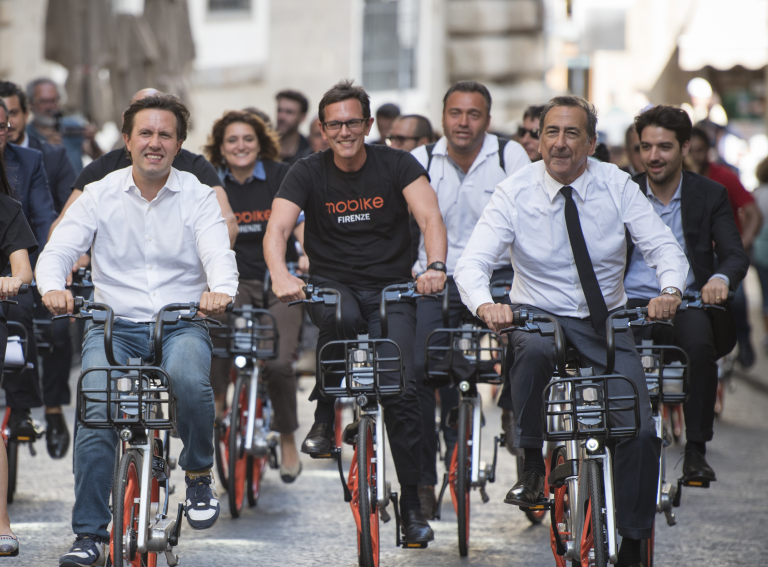There’s never been a more exciting time to work in the mobility and sustainability space.
At least that’s what Anja Huber, Associate Partner at the McKinsey Center for Future Mobility, has to say.
While the new mobility industry faced pivotal funding challenges over the last eighteen months, Anja supported various mobility disruptors on their journey from series A funding all the way through to public offering (IPO), helping them sharpen their equity story, accelerate their commercial pipelines and form valuable ecosystem partnerships.
Anja has also been a speaker and mentor at Futurewoman that aims to bring more female sustainability experts into the spotlight.
Now Zag returns the favour.
Zag Daily: What does the McKinsey Center for Future Mobility do?
Anja: “The McKinsey Center for Future Mobility is our think tank that facilitates the disruptive shift in mobility. Broadly speaking, it focuses on electrification, autonomous driving, shared mobility, micro-mobility and many other adjacent tech and macro trends. We’re a pool of experts trying to accelerate the shift to net zero whilst improving access to affordable and convenient modes of transport. That means I am fortunate enough to work with sustainable funds, mobility startups, and some of the most iconic and premium automotive OEMs who want to make a move into new mobility and sustainability in general. All of them, including myself, share the belief that ‘green growth’ strategies can lead to both economic value and a positive impact on our planet.”
Zag Daily: What is one of the biggest challenges with scaling startups?
Anja: “There’s a range of challenges but it usually starts with articulating an ‘absurdly ambitious’ vision, articulating a distinctive value proposition and raising capital to deliver against that plan. The last eighteen months have been particularly challenging for the industry, with macro-political uncertainties, higher cost of capital, longer funding rounds, realistic and in some cases sobering multiples, and a general trend toward consolidation and a stronger profitability mindset. Also, for electrification technologies to achieve mass adoption, we need to achieve a competitive total cost of ownership faster – which means accelerating product development cycles, doubling down on product cost-out efforts and helping the overall mobility ecosystem to put the required grid and infrastructure in place.
“Equally important is scaling the order book. It’s fairly easy to sell a handful of e-bikes or e-scooters these days, or to pilot a set of electric trucks with forward-leaning customers who try to deliver against their respective decarbonization commitments. What’s not easy is achieving mass adoption and filling the order books so that investors and partners can confidently invest time and resources. And then when companies do scale to a certain size, they need to organise effectively, and often rethink and adapt their overall organisation structure, KPIs, leadership set-up and culture.”
Zag Daily: What should be a new mobility startup’s main form of funding?
Anja: “Several different assets and funding vehicles are needed in the cleantech space. These technologies we speak of – whether it’s batteries, hydrogen, renewables, Carbon Capture, Utilisation and Storage (CCUS) or others – are capital-intensive which means early-stage companies need a lot of funding. Venture capital ticket sizes are not big enough. Private equity is too short-term oriented, and infrastructure funding is too risk averse. We need to rethink and come up with new asset classes – some type of ‘climate capital’.
“From a startup point of view, we’re seeing more diverse funding profiles including more strategic partnerships with incumbents. Debt financing has become more common in recent months as well. The landscape overall is becoming more complex and asset classes need to be rethought. The best combination of and strategy for funding depends on the company’s growth stage, capital intensity, and overall ownership structure. There are also regional differences. The Nordic countries are for instance quite bullish on sustainability and in many aspects 5 to 10 years ahead of what’s happening in Germany or the broader DACH region. Some go as far as saying that the Nordics are on track to becoming the Silicon Valley for clean tech.”
Zag Daily: McKinsey recently predicted the global micromobility market will be worth $520 billion by 2035. How did you arrive at this figure?
Anja: “Every year we update our proprietary micromobility models and make an estimation on global value pools depending on the shifts we see in technology advancement and consumer behaviour. This means looking at what people’s preferences are on mobility modes and if they’re becoming more open to different form factors, like they were after COVID for instance. We also look at regulation across countries, which is of course one of the key driving forces behind decarbonisation and scaling up cleantech. And we analyse company strategies, historic and forward-looking funding trends. Based on that, we come up with this forecast to provide guidance to founders, but also the broader micromobility ecosystem like investors, incumbents and adjacent players.”
Zag Daily: What would you say is the biggest driver of McKinsey’s forecast?
Anja: “Definitely regulation and consumer behaviour. More and more cities have piloted zero emission zones, started removing main roads and parking slots for the benefit of bike lanes and charging stations, and introduced severe speed limits. That makes commuting via car increasingly inconvenient and costly. Moving to different form factors like e-bikes or e-scooters becomes more attractive, and cities start to understand how to build attractive multi-modal mobility concepts. It’s an interplay of different factors and it’s not going to stop. We become more bullish about our forecasts every year. Despite the challenging last year and a half, the mid-term to long-term trend will continue.”
Zag Daily: You were a mentor at Futurewoman for three years. Why?
Anja: “Decarbonisation and cleantech is one of the most important but also challenging topics that we have as a society. We need more women and diverse profiles at the table, because solving for net zero requires a different way of looking at problems, understanding customer needs, structuring solutions, as well as putting together and leading high-performing teams. Even though we do have an increasing share of females on the boards of large companies, we don’t have enough women in the field, and it takes too long to fill up the ranks in the middle or senior-management space. Also, more female founders are needed at the table. Sources say that only 20% of venture capital flows to companies that have at least one female as part of the funding team. Likewise, women in private equity are still underrepresented in leadership positions, with only 20 percent representation in managing-director roles. If I can play a little role in cheering on women who have a love for product innovation, sustainable mobility and cleantech then I will.”
Zag Daily: So, 80% of funding from venture capitalists flow to teams with no women?
Anja: “Yes, and there are of course many different factors that lead to this: Broadly speaking I would say men are often more willing to take a risk and want to become entrepreneurs and founders; and risk capital is often still handed out by male-dominated investment teams. Women on the other hand are often faced with the reality that you can probably achieve most of what you desire in life, but not at the same time – especially when it comes to combining family life with career ambitions. A critical enabler for females is of course to form and have better access to professional networks – to have visibility on where exciting leadership opportunities are emerging.”
Zag Daily: What do you think is one big challenge that women working in new mobility face?
Anja: “Networks in a male-dominated field are very important. It’s challenging for women to build up their own networks, but it’s extremely important to exercise this muscle of finding allies and deepening understanding to gain visibility on opportunities and help other females with diverse profiles. As you move up the rank, it becomes especially important to understand that this is a muscle to build and asset to have, and I would encourage fellow females to nurture it just as much as you’d nurture your technical insights and experience in your respective field of work.
“We have an incredibly strong bond of female leaders within McKinsey, and the firm is committed to creating equal opportunities for females in the mobility field and beyond. I have been fortunate enough to have a broad group of sponsors who helped create these client opportunities for me; and who have coached me through some of the tougher moments of our consulting profession as well. That’s a very strong resource to have. A goal of mine is to also become a sponsor for other females who are doing similar work to me and help build out those networks.”
Zag Daily: How should the mobility and cleantech space empower women?
Anja: “There are two aspects that come to mind and that positively influence each other: On the one hand it is important to continue improving structural enablers – flexible working models, childcare, sponsorship programs – and that is the responsibility of companies, governments, interest groups and others.
“On the other hand, I really believe that it is on us female leaders to articulate our aspirations, think big, raise our hand once an opportunity presents itself, not fall for the imposter syndrome and invest in these networks that we just talked about. What’s helped me is understanding that there’s a place and time for everything in life. There’s a time for family, and there’s also a time for going all in on your career and pushing for that next career move or leadership opportunity. Don’t leave before you leave. It was Sheryl Sandberg that wrote that the most important career decision a woman can make is who her life partner is, and whether that is a ‘real partner’ who will support her in her dreams and aspirations.”
Zag Daily: Who is one woman in the sector you would like to spotlight?
Anja: “I’m lucky enough to have met many inspiring women. One of them is Jennifer Dungs who is the Head of Mobility at EIT InnoEnergy. She’s a powerful force in the industry, with the ability to make big investment decisions and propel companies forward through her various board mandates. She’s terrific, a sharp visionary, fun to work with and an excellent bridge builder.
“Another person who I find incredibly inspiring is Carla Detrieux, who is the Director of Business Development at Volta Trucks. A lot of the time, she’s the only woman in a very male-dominated space and she disrupts the global transport space with her ideas and resilience, and always follows her NorthStar of emission-free transport.
“And then there is Renata Jungo Brüngger, a Board Member at Mercedes-Benz. She is also responsible for sustainability at the Board level and steers a company of over 160,000 employees toward decarbonization. The influence she has is inspiring and her ambition is to be applauded.”





